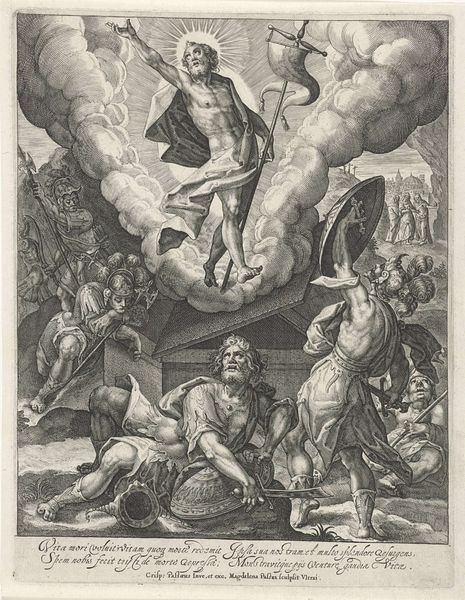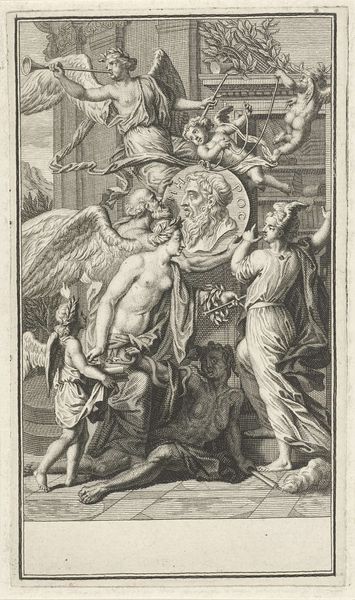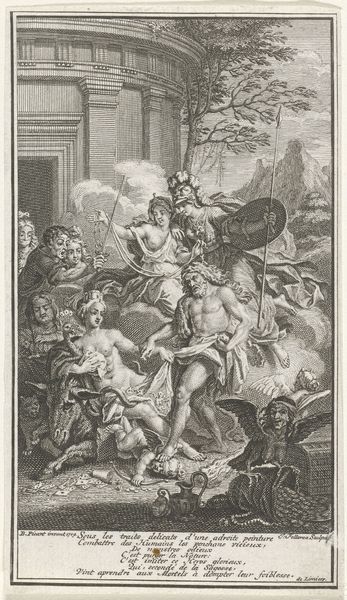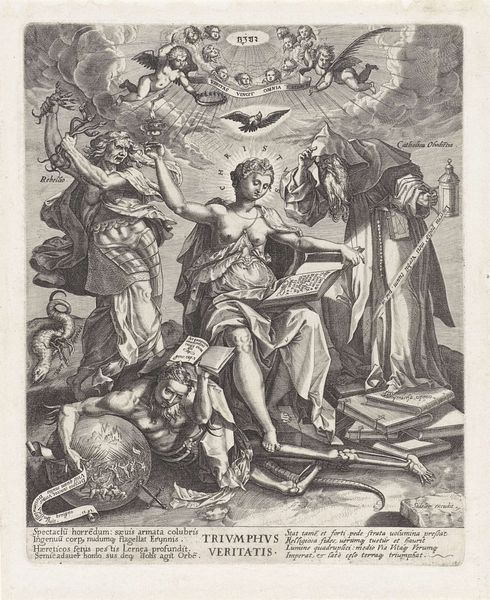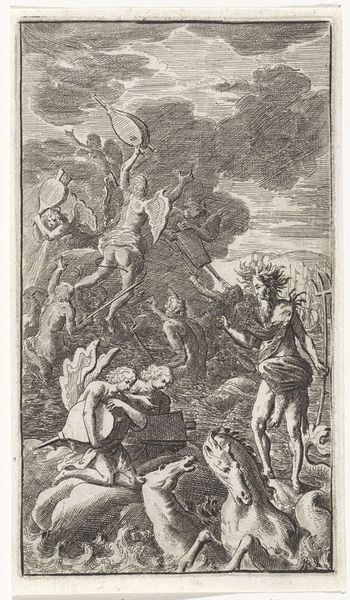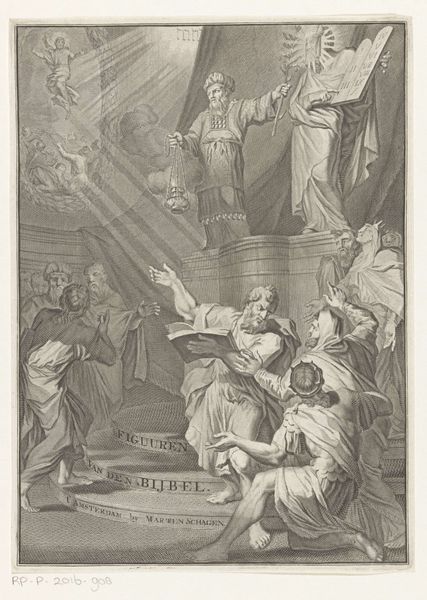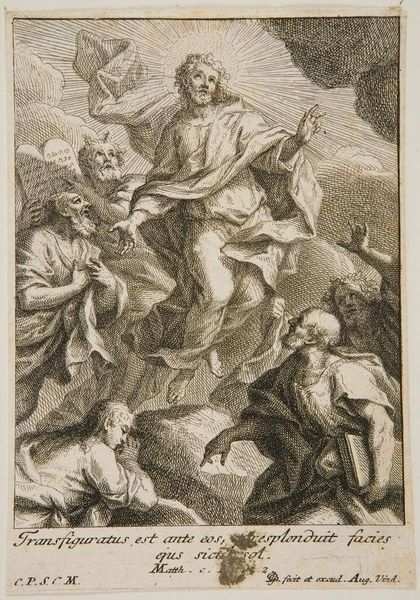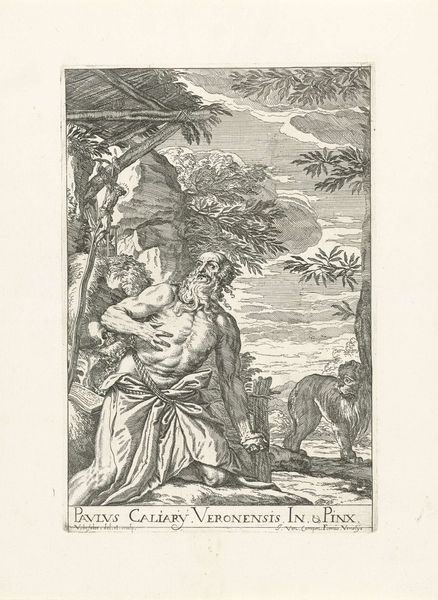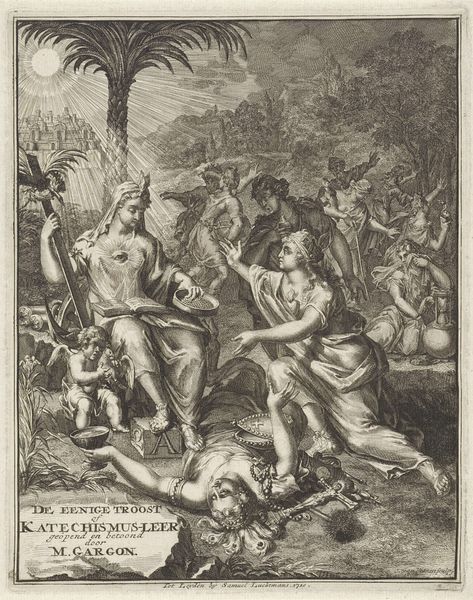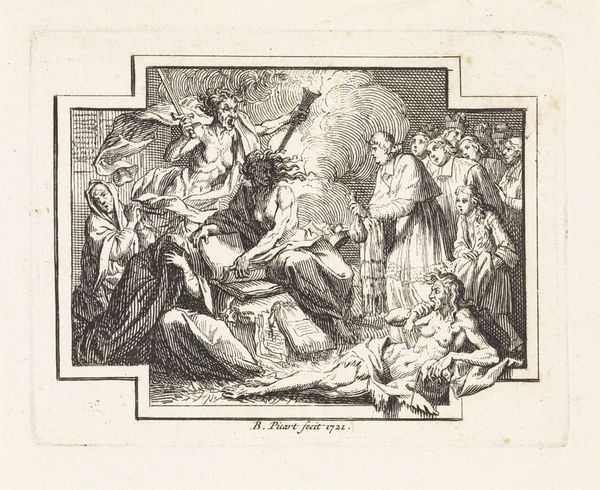
print, engraving
# print
#
mannerism
#
figuration
#
history-painting
#
engraving
Dimensions: height 195 mm, width 146 mm
Copyright: Rijks Museum: Open Domain
Johann Sadeler I created this small engraving of the Resurrection sometime around 1600 using a technique that was then at the cutting edge of reproductive technology. Engraving involves using a tool called a burin to carve lines directly into a copper plate. Ink is then applied to the plate, and wiped off the surface, leaving it only in the incised lines. The plate is then pressed onto paper, transferring the image. Sadeler was a master of this physically demanding process, and could achieve astonishing detail, as you can see here. The real genius of printmaking was its capacity for mass production. A single plate could yield hundreds, even thousands, of impressions. This made images like the Resurrection accessible to a much wider audience than an original painting ever could have reached. The mechanization of image-making allowed artists like Sadeler to tap into a growing market for affordable art, and to disseminate religious narratives far and wide. So, although it's small and monochromatic, this engraving is a testament to the power of materials, process, and social context in shaping our understanding of art.
Comments
No comments
Be the first to comment and join the conversation on the ultimate creative platform.
